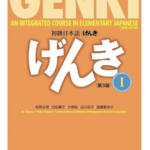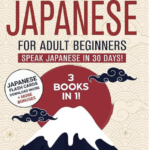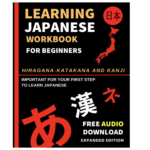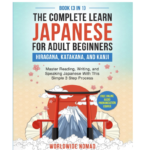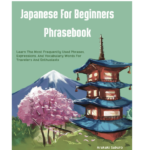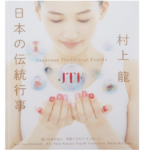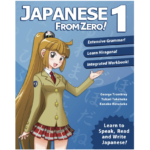
May 5th is a Japanese national holiday known as Children’s Day. It was once called “Tango no Sekku,” an event that celebrated the growth of boys. Children would hoist carp-shaped flags of various sizes in the blue sky. These flags were called “Koinobori” or carp streamers. Carp streamers are a type of flag used in the military and at festivals since ancient times, and their brightly colored appearance has always been a joy to behold. In the past, this event involved using helmets and armors to decorate and flying carp streamers to pray for the healthy growth and success of boys.
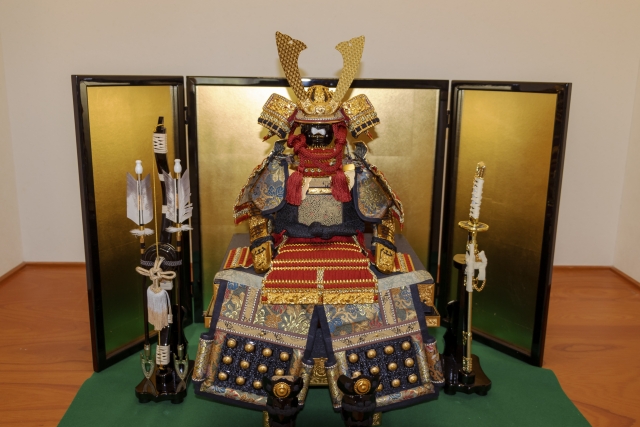
The helmets and armor displayed on Children's Day are called “May dolls." These dolls are made with the wish that boys will grow up to be strong and wise men. In my family, my grandfather used to display magnificent May dolls, and just looking at them made me happy. For boys, the May dolls look cool, and although the price of an authentic, handicraft-like helmet is expensive, ranging from 150,000 yen to 300,000 yen, there are still families with children who display them today.
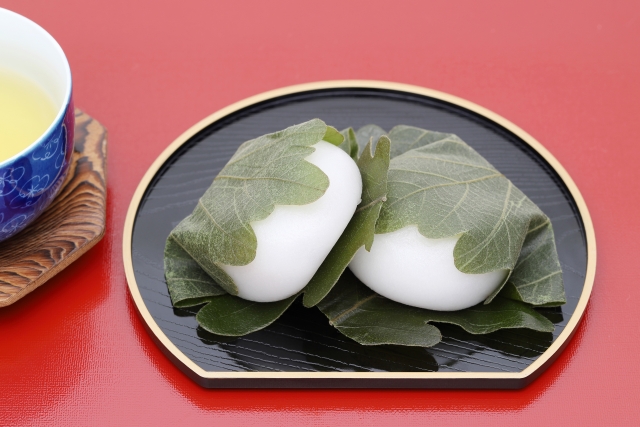
On this day, there are also customs to enjoy foods that are said to bring good luck, such as "chimaki"(dumplings wrapped in bamboo leaves) and "kashiwa-mochi" (rice cake with sweetened oak leaves), as well as enjoying a "shobuyu" (bath with iris petals). It is believed that shobuyu has the effect of warding off evil spirits and has a pleasant aroma.
Tango no Sekku is an event that came from China, but in Japan, it has been celebrated since the Nara period (710-794). Even today, items such as carp streamers, May dolls, chimaki, and kashiwa-mochi are sold at supermarkets and convenience stores.
Japanese (日本語)
こどもの日(Children's Day)
五月五日は日本の祝日で、「こどもの日」として知られています。これはかつて「端午の節句」と呼ばれ、男の子の成長を祝う行事でした。子供たちは、青空に飛び交う大小の鯉の旗を掲げ、これを「鯉のぼり」と呼びます。鯉のぼりは、昔から軍や祭りで使われてきた旗の一種で、その色鮮やかな姿は見る者の心を楽しませてきました。この行事はかつて、男の子の健やかな成長と成功を祈って、兜や鎧を飾り、鯉のぼりを立てるものでした。
こどもの日に飾る兜や鎧は、「五月人形」と呼ばれています。「五月人形」には、男の子が、強く賢い大人になるようにとの願いが込められています。私の家では昔、おじいちゃんが立派な五月人形を飾ってくれ、それを見るだけで幸せな気持ちになりました。男の子にとって五月人形は格好良く見えるもので、工芸品のような本格的な兜の値段は15万円~30万円と高価ですが、子供がいる家庭では今でも飾る人がいます。
この日には「ちまき」や「柏餅」といった縁起が良いとされる食べ物や「菖蒲湯」を楽しむ習慣もあります。菖蒲湯には邪気を払う効果があると信じられており、心地よい香りが漂います。
端午の節句は中国から伝わった行事ですが、日本では奈良時代から続いており、今でも鯉のぼりや五月人形、ちまき、柏餅などのアイテムがスーパーやコンビニなどで売られています。
Sentence Quiz (文章問題)
Today is Children's Day.
今日はこどもの日です。
Children's Day is one of the days of Golden Week.
こどもの日はゴールデンウィークのうちの一日です。
When I was a child, this day made me especially happy for some reason.
子供の頃はこの日がなぜか特別に嬉しかった。
Seeing carp streamers still makes me feel good.
鯉のぼりを見るのは今でも気分がいい。
Related Words (関連ワード)
Toggle Button
| Japanese | Hiragana | English |
|---|---|---|
| 日本 | にほん | Japan |
| 祝日 | しゅくじつ | National holiday |
| こどもの日 | こどものひ | Children's Day |
| 知られている | しられている | Known |
| かつて | かつて | Once |
| 端午の節句 | たんごのせっく | Tango no Sekku |
| 呼ばれ | よばれ | Called |
| 男の子 | おとこのこ | Boy |
| 成長 | せいちょう | Growth |
| 祝う | いわう | Celebrate |
| 行事 | ぎょうじ | Event |
| 子供たち | こどもたち | Children |
| 青空 | あおぞら | Blue sky |
| 飛び交う | とびかう | Fluttering |
| 大小 | だいしょう | Small and large |
| 鯉の旗 | こいのはた | Koi flag |
| 掲げ | かかげ | Raise |
| 鯉のぼり | こいのぼり | Koinobori (carp streamers) |
| 昔 | むかし | Old days |
| 軍 | ぐん | Army |
| 祭り | まつり | Festival |
| 使われてきた | つかわれてきた | Has been used |
| 旗 | はた | Flag |
| 一種 | いっしゅ | One kind |
| 色鮮やかな | いろあざやかな | Colorful |
| 姿 | すがた | Figure |
| 見る者 | みるもの | Viewer |
| 心 | こころ | Heart |
| 楽しませてきました | たのしませてきました | Have been entertaining |
| 成功 | せいこう | Success |
| 祈って | いのって | Pray |
| 兜 | かぶと | Helmet |
| 鎧 | よろい | Armor |
| 立てる | たてる | Stand up |
| 重要 | じゅうよう | Important |
| アイテム | あいてむ | Item |
| 家 | いえ | House |
| おじいちゃん | おじいちゃん | Grandpa |
| 五月人形 | ごがつにんぎょう | May doll |
| 飾って | かざって | Decorate |
| 幸せな | しあわせな | Happy |
| 気持ち | きもち | Feeling |
| 格好良く | かっこよく | Cool |
| 見える | みえる | Look |
| 本格的な | ほんかくてきな | Authentic |
| 値段 | ねだん | Price |
| 高価 | こうか | Expensive |
| 家庭 | かてい | Family |
| 飾る | かざる | Decorate |
| 人 | ひと | People |
| ちまき | ちまき | Chimaki (dumplings wrapped in bamboo leaves) |
| 柏餅 | かしわもち | Kashiwa-mochi (rice cake wiith sweetened oak leaves) |
| 縁起が良い | えんぎがいい | Good luck |
| 食べ物 | たべもの | Food |
| 菖蒲湯 | しょうぶゆ | Shobuyu (bath with iris leaves) |
| 楽しむ | たのしむ | Enjoy |
| 習慣 | しゅうかん | Custom |
| 邪気 | じゃき | Evil spirits |
| 払う | はらう | Drive away |
| 効果 | こうか | Effect |
| 信じられて | しんじられて | Believed |
| 心地よい | ここちよい | Comfortable |
| 香り | かおり | Scent |
| 漂います | ただよいます | Drift |
| 中国 | ちゅうごく | China |
| 伝わった | つたわった | Was transmitted |
| 奈良時代 | ならじだい | Nara period |
| 続いて | つづいて | Continuing |
| 売られている | うられている | Are sold |
Created by Hiroto T. Murakami.

